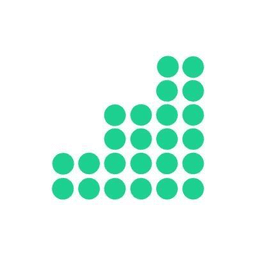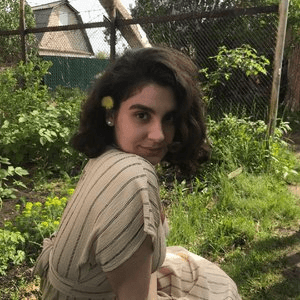How Brian Casel Scaled and Sold Audience Ops for Upper Six Figures in Content Services


Business Description
Table of Contents
Navigate through the case study sections
Executive Summary
Case Study Content
How Brian Casel Transformed Audience Ops Into a Scalable, Sellable Productized Service
Some entrepreneurs dream of building products. Others love the hands-on experience of services. Few manage to take content services and package them into a machine that runs almost on its own, generating steady revenue, happy clients, and eventually, a high-value exit. Brian Casel did exactly that with Audience Ops, his productized content marketing agency. Let’s dissect how he built, scaled, and sold Audience Ops, and how you can pull off the same playbook.
From Freelance Hustle to Systems-Driven Agency
Brian left his front-end dev job in 2008, freelanced for a few years, and then began launching his own businesses. He started with WordPress themes, launching ThemeJam in 2009. This taught him all the ropes for working with digital products, recurring revenue, and running a 1-person show. By 2015, after selling both ThemeJam and his SaaS project Restaurant Engine (each for six figures), Brian was ready for something new, but not yet sure what.
The Birth of Audience Ops: Scratching an Immediate Itch
Audience Ops started as nothing more than a quick experiment. Brian sent emails directly to business owner friends and SaaS founders, pitching a “done-for-you content service.” No fancy software magic, just a simple offer: blog posts, podcasts, and case studies delivered on autopilot every month. The feedback was strong right away, several contacts said yes and became paying customers immediately. Instead of going back to software, Brian doubled down.
Early Traction With Direct Outreach
Most new agencies struggle to break into the market. Brian leveraged his existing relationships, he’d built a reputation in WordPress and SaaS circles. With no complicated funnels, he hit five figures in recurring revenue fast. He didn’t waste time on paid ads or viral tricks; he used high-touch, personal outreach and strong word of mouth for those first deals. This was a low-risk way to prove the model.
Systematizing the Business: Building a Repeatable Machine
Content agencies often struggle to maintain consistent quality. Brian knew a business built on him alone couldn't scale or later be sold. He immediately focused on developing tight processes: templated onboarding, strict editorial guidelines, project management workflows, and a remote team. By 2018, his writers, assistants, and account managers ran everything. Standardized procedures meant clients always got reliable, on-brand output, and the agency ran with almost no hands-on management.
Growing Revenue and Team Size
Between 2015 and 2021, Audience Ops grew into a powerhouse, serving hundreds of clients, including SaaS companies, founders, and agencies who understood the need for great content but hated hiring freelancers or managing writers internally. At peak, the distributed team reached 25 people. Revenue ticked up into the upper five figures monthly, with several million booked over the lifetime of the business. Notably, Brian habitually made himself less essential each year, so that Audience Ops could run (and grow) without his direct workload, even as he dabbled in coding and SaaS-building on the side.
Preparing for a Sale: Always Building to Exit
There’s no magic to selling a business, but you make your own luck by being ready. Brian built Audience Ops to be sellable by keeping financials tight, robust documentation, strong client relationships, and a team that didn’t depend on him. Standardization was the secret. If you want to sell, don’t wait until you’re burned out, make the decision while growth is still robust and buyers will pay a premium for stability and future potential.
The Exit: Upper Six Figures and a Happy Team
In 2021, Brian listed Audience Ops on Acquire.com, quickly attracting multiple serious offers. He accepted an upper six-figure deal from a buyer he trusted (JD Gaffam) and made sure the team would stick around. The new owner kept the full crew on, keeping quality and client retention high. Brian used the momentum to sell several smaller software and SaaS projects too, diversifying his own time and cash. The exit wasn’t just a windfall, it was a launch pad for new projects, including Clarityflow (async video for coaches) and Instrumental Products.
Advice for Founders: Broker vs. Marketplace vs. DIY
Brian’s story isn’t just about growth; it’s about saleability. He’s sold through brokers, private deals, and modern marketplaces. For deals under $1M, marketplaces like Acquire.com offer direct access and simple workflows. Bigger exits might justify a broker’s cost, but the lesson is that each sale is unique, pick your path based on business size, your network, and urgency. Above all, build the business so someone else could step in and succeed without you holding their hand.
Life After Sale: Staying in the Game
Exit doesn’t mean retirement. Brian moved right onto Clarityflow, helping coaches do async client video. He also launched Instrumental Products to share his lessons on building productized businesses with other founders. He keeps building, hiring, and selling, repeatable systems over hustle. It’s a template that any operator, not just serial founders, can follow.
Key Steps to Copy This Success
- Start with low-overhead, reach out to people you already know first.
- Standardize everything: onboarding, delivery, editorial, customer support. Don’t wing it.
- Remove yourself over time through hiring and better processes, don’t make yourself the bottleneck.
- Stay on top of the numbers and document everything. This makes selling way easier.
- Consider your end game from Day 1, even if you’re not actively planning an exit yet.
Final Thoughts
Audience Ops is proof that a productized service, even in a competitive space, can be built to scale and sell, without a huge staff or investors. If you take care to systematize, focus on recurring revenue, and never let the business depend mainly on you, your own firm can be a valuable sellable asset in just a few years. Don’t wait for the business to run you ragged before planning your next move. Do it like Brian: build, grow, systematize, sell, and repeat.
Business Plan
Market Problem
Many content agencies struggle with consistency, scalability, and client retention. They often rely heavily on the founder, leading to…
See the full market problemSolution
Audience Ops addresses these challenges by offering a productized content service that is consistent and reliable. The agency employs…
See the full solutionTarget Market
SaaS Companies
These businesses require regular, high-quality content to engage users and establish thought leadership.
Digital Agencies
Agencies looking to outsource content creation can benefit from a reliable partner that delivers consistent results.
Competitors
ContentFly
Offers a similar content creation service but lacks the depth of process standardization.
ClearVoice
Focuses on freelance talent, which can lead to inconsistent quality and management challenges.
Competitive Advantage
Audience Ops excels in its productized service model, which is built on repeatable processes that ensure consistent quality. Unlike many…
See the full competitive advantageSales and Marketing
The initial client acquisition strategy relied heavily on personal outreach and leveraging existing networks. Brian utilized his…
See the full Sales and marketing planSuccess Milestones
Launch MVP
Start with a basic service offering and onboard the first 5 clients through personal outreach.
Develop Standard Processes
Create templates and guidelines for onboarding and content delivery to ensure consistency.
Key Takeaways
- 1Direct outreach to a strong personal network accelerated Audience Ops’ early client growth, removing the need for paid advertising.
- 2Process standardization ensured repeatable quality, client retention, and allowed Brian to gradually step away from daily tasks.
- 3Automating and systemizing operations turned the agency into a valuable asset that did not depend on the founder to run.
- 4A strong remote team was built early and maintained, allowing for hands-off scaling and easy transition to new ownership.
- 5Selling the business at its peak meant getting maximum value and a seamless transition for staff and clients alike.
- 6Using proceeds from the exit, Brian quickly spun up and focused on new ventures in SaaS and coaching.
Key Facts
Tools & Technologies Used
Premium Content Locked
Subscribe to access the tools and technologies used in this case study.
Unlock NowHow to Replicate This Success
Premium Content Locked
Subscribe to access the step-by-step replication guide for this case study.
Unlock NowInterested in Being Featured?
Share your success story with our community of entrepreneurs.
Explore More Case Studies
Discover other inspiring business success stories

How RemoveBounce Transformed After Acquisition & Doubled Its SaaS Growth
A group of software-savvy founders acquired RemoveBounce, an email list cleaning SaaS, for $35,000 on Flippa, then rebui...
RemoveBounce

How Veresk’s Etsy Shop Earned $24K Selling Affordable Art
After losing her bank job in 2019, Anastasia from Chelyabinsk turned to painting flowers for fun. Three months in, she m...
Veresk

How a Solo Sports Blogger Turned a 1990s Hobby Into a $425K Exit on Flippa
Rob Wood, founder of TopEndSports.com, turned a passion for sports science into an authority site drawing over 1.4 milli...
TopEndSports
